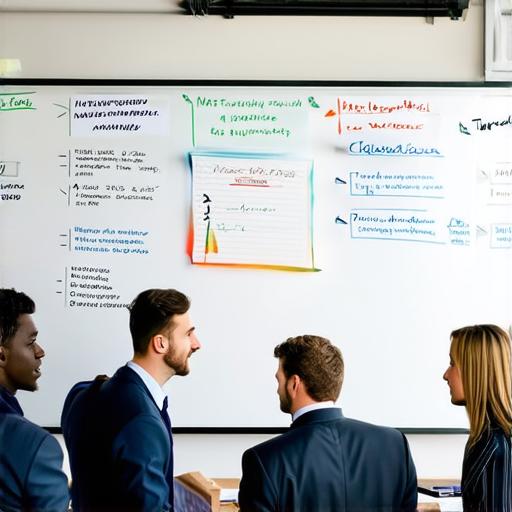Introduction
Collaboration is essential for success in any organization. Effective collaboration helps teams solve problems, make decisions, and accomplish goals. However, despite its importance, many teams struggle to collaborate effectively. In this article, we’ll explore strategies that can help your team collaborate more effectively and increase overall efficiency. We’ll also discuss how you can optimize your team’s processes and tools to support better collaboration and achieve optimal outcomes.
The Importance of Collaboration
Collaboration is the process of working together with others to achieve a common goal. It involves communication, sharing ideas, and making decisions that benefit everyone involved. Effective collaboration helps teams solve problems, make decisions, and accomplish goals. Collaboration also fosters creativity, innovation, and learning, which can help your team stay competitive in today’s fast-paced business environment.
The Challenges of Collaboration
Collaborating with others can be challenging, especially in a diverse and dynamic work environment. Some of the common challenges of collaboration include:
1. Communication barriers: Different team members may have different communication styles, preferences, or languages, which can lead to misunderstandings and conflicts.
2. Differences in values and goals: Teams may have different values or goals, which can make it challenging to work together towards a common objective.
3. Role ambiguity: Team members may not be clear on their roles and responsibilities, leading to confusion and duplication of effort.
4. Lack of trust: Trust is essential for effective collaboration. However, building trust can be challenging, especially in a remote or distributed work environment.
5. Technology barriers: Technology tools can help teams collaborate more effectively, but they can also create new challenges such as information overload and data security concerns.
Strategies for Effective Collaboration
To overcome these challenges and achieve effective collaboration, you can implement the following strategies:
1. Establish clear communication protocols: Define clear communication protocols that ensure everyone is on the same page. This includes establishing a communication channel, defining communication expectations, and ensuring that team members are aware of each other’s availability.
2. Foster trust and respect: Build trust and respect among team members by promoting open communication, acknowledging each other’s contributions, and addressing conflicts in a constructive manner.
3. Define roles and responsibilities: Clearly define roles and responsibilities to avoid confusion and duplication of effort. This includes identifying areas where team members can collaborate and complement each other’s strengths.
4. Use technology effectively: Use technology tools to support collaboration, such as project management software, video conferencing platforms, and collaboration tools like Slack or Microsoft Teams. However, be mindful of the potential challenges associated with technology, such as information overload and data security concerns.
5. Encourage feedback and continuous improvement: Encourage team members to provide feedback on the collaboration process and identify areas for improvement. This can help teams continuously improve their processes and achieve better outcomes.
Case Studies: Successful Team Collaboration
To illustrate these strategies, let’s look at some real-life examples of successful team collaboration.
Example 1: Agile Development Teams
Agile development teams are highly collaborative and effective in achieving their goals. These teams follow a set of principles that promote communication, flexibility, and continuous improvement. For example, agile teams use daily stand-up meetings to review progress and identify areas for improvement. They also use collaborative tools like Jira or Asana to track tasks and ensure everyone is on the same page.
Example 2: Remote Work Teams
Remote work teams can be highly effective if they have the right processes and tools in place. For example, remote teams can use video conferencing platforms like Zoom or Microsoft Teams to simulate face-to-face meetings and ensure everyone is on the same page. They can also use project management software like Trello or Asana to track tasks and ensure that everyone is working towards the same goal.
Optimizing Your Team’s Processes and Tools for Collaboration
To achieve optimal collaboration, you need to optimize your team’s processes and tools. Here are some tips on how to do this:

1. Identify bottlenecks: Identify areas where the collaboration process is slow or inefficient. This can help you identify opportunities for improvement and optimize your processes accordingly.
2. Use data to inform decisions: Use data analytics to identify trends and patterns in team performance. This can help you make informed decisions about how to optimize your processes and tools.
3. Implement automation: Implement automation tools to streamline repetitive tasks and free up time for more critical activities. For example, you can use Zapier or IFTTT to automate email notifications or social media posts.
4. Use cloud-based tools: Use cloud-based tools like Google Drive or Dropbox to share files and collaborate on projects in real-time. This can help teams stay organized and avoid version control issues.
5. Provide training and support: Provide training and support to team members to ensure they are using the right tools and processes effectively. This can help reduce frustration and increase productivity.
Summary
Effective collaboration is essential for success in any organization. However, achieving effective collaboration can be challenging, especially in a diverse and dynamic work environment. By implementing strategies that promote communication, trust, and continuous improvement, you can optimize your team’s processes and tools to achieve maximum efficiency. Remember to identify bottlenecks, use data to inform decisions, implement automation, use cloud-based tools, and provide training and support to achieve optimal outcomes. With the right mindset and approach, you can build a highly collaborative and effective team that achieves its goals.